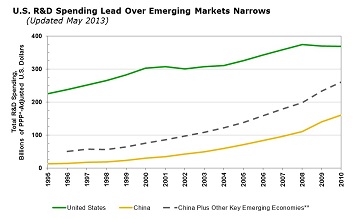Activity Based Costing: What is ABC and Who is it for?
While traditional costing is a simple way to determine manufacturing costs for basic product lines, it’s not always the most accurate. It spreads overhead evenly over all products. For a more accurate picture of what it takes to produce a product, activity-based costing helps SMEs remain profitable by understanding the true cost of manufacturing.

What is activity based costing (ABC)?
Activity-based costing, or ABC, is a costing method that links indirect costs and overhead to the activities that drive it. Products get charged based on how much they use specific activities like setups, inspections, and material moves, rather than receiving a blanket overhead rate.
The ABC model shows you what’s actually driving costs, so you can price better and discover opportunities for process improvements. The catch is that you need more data collection. But that extra work usually pays off if you’ve got a diverse product mix or you’re operating on thin margins.
ABC vs. standard costing
Unlike standard costing, ABC recognizes that a simple product shouldn’t carry the same overhead burden as a complex one requiring multiple setups, inspections, and material handling. So, whereas standard costing applies overhead uniformly across all products using predetermined rates, the ABC method traces overhead to specific activities and assigns costs based on actual consumption.
The standard costing system works well for limited product lines with similar processes and low overhead. ABC shines when you manufacture diverse products with varying resource needs or when overhead represents a significant cost portion.
Standard costing methodology works fine for high-volume production with limited variety. ABC makes more sense when you’re running custom or low-volume operations with lots of product diversity, like engineer-to-order. The risk with standard costing is that complex products end up under-costed while simple ones get overcharged, which throws off your pricing.
The activity-based costing formula
ABC uses a two-stage calculation. Start with the cost driver rate. Divide your total cost pool by total cost driver quantity. For example, if setup costs are $50,000 and you perform 100 setups, your rate is $500 per setup.
Next, costs are assigned by multiplying that rate by what each product uses. Product A needs 15 setups, which means $7,500 in setup costs. Do this for all activities and different cost pools.
This accounting method becomes more powerful as you apply it across multiple activities. A product’s total overhead equals the sum of all activity costs assigned to it. This might include machine setup costs, quality inspection costs, material handling costs, and facility-level costs. Each is calculated using its specific cost driver and consumption rate. By tracking the actual cost of production in this fashion, you can come up with a more accurate unit cost.
Next, let’s explore the ABC system calculation a little deeper by defining activities, cost pools, and cost drivers. Then, we’ll look at a practical example to show how to apply activity-based costing.
The key components of activity based costing
Activity-based costing is divided into three parts, sometimes called cost objects. To understand how it assigns cost data to production, you need to understand activities, cost pools, and cost drivers.
Activities
Activities are the specific tasks or processes that consume resources in your manufacturing operation. ABC categorizes these activities into four hierarchical levels based on how they relate to production volume and product complexity.
- Unit-level activities: Tasks performed for each individual unit produced, such as machine operation, assembly work, or quality testing. Unit costs increase proportionally with production volume.
- Batch-level activities: These are performed whenever you process a batch, whether ten units or a thousand. Examples are machine setups, material handling, and production scheduling.
- Product-level activities: These are any activities that support specific products, independent of how many you make or how often. This covers product design, engineering changes, and maintaining specialized equipment.
- Facility-level activities: These are overhead costs that support everything you do but don’t connect to individual products. Building maintenance, security, plant management, and property taxes are typical examples.
Cost pools
A cost pool is a grouping of individual overhead costs related to a specific activity. Instead of lumping all overhead into one account, activity based costing creates separate pools for each distinct activity. Some examples are machine setup costs, quality inspection costs, or material handling costs.
Cost pools organize expenses logically based on what drives them. A setup cost pool could include machine operator wages during setup, tooling adjustments, and test runs. You want each pool to contain only costs sharing the same driver. Mix different drivers in one pool, and your allocations won’t reflect reality. How many pools you create depends on complexity and how much detail matters for your decisions.
Most manufacturers end up with pools for things like quality control, production scheduling, equipment maintenance, material procurement, and warehouse operations. More pools provide greater accuracy but require more data tracking and management.
Cost drivers
A cost driver is the measurable factor that causes an activity’s costs to increase or decrease. It’s the action or event that triggers resource consumption. For example, the number of machine setups drives setup costs, while the number of quality inspections drives inspection costs.
Selecting the right cost driver requires understanding what actually causes the cost to occur. Machine hours work well for activities tied to equipment runtime, like machining or assembly operations. Number of purchase orders suits procurement activities, while number of material moves applies to material handling costs.
The driver should have a clear, logical relationship to the activity it measures. Use the wrong driver and your costs end up in the wrong places. Pick the right driver and the costs flow based on actual consumption. That’s how you get accurate profitability numbers and make better pricing calls.
Activity based costing example
A practical example shows how ABC works better than abstract explanations. This scenario is made up, but it reflects what happens when manufacturers actually implement activity-based costing.
The situation
MidWest Manufacturing produces standard industrial brackets and custom precision housings. The brackets are high volume and simple. The housings are low volume and complex.
Traditional costing used one overhead rate tied to direct labor hours. Both products appeared equally profitable. But management thought the custom housings were consuming more resources than the system captured.
The setup
Four key activities were identified: machine setups, quality inspections, material handling, and production runs. Cost pools matched those activities. Setup costs ran $80,000 annually. Inspections cost $60,000 and material handling was $40,000. Machine operation hit $120,000. Cost drivers reflected what actually drove resource consumption: number of setups, number of inspections, number of material moves, and machine hours.
The calculation
Standard brackets used five setups, 10 inspections, 20 material moves, and 800 machine hours per year, producing 10,000 units. Custom housings needed 45 setups, 90 inspections, 80 material moves, and 400 machine hours, yielding 2,000 units. Cost driver rates were calculated, and costs were assigned. Standard brackets absorbed $15 overhead per unit, while custom housings absorbed $95 per unit. Traditional costing had both at $30 per unit.
The result
Custom housings were shown to be dramatically under-costed with ABC. That’s why they looked profitable while consuming disproportionate resources. Management repriced custom work, cut unprofitable custom orders, and targeted setup reduction for cost savings. Six months later, profitability was up 18% from better pricing and process improvements.
ABC’s core value is revealing cost dynamics that traditional methods hide. But beyond numbers, what other advantages does this level of detail provide for the manufacturing industry?
The advantages of activity-based costing
ABC stops treating overhead like one big bucket and breaks it down so you can actually work with it. Here’s what that gets you:
- Accurate product profitability. See which products make money and which don’t. Stop pricing based on averages that hide the real story.
- Smarter resource cost allocation. Track where resources go so you can double down on what works and cut what doesn’t.
- Customer profitability insights. Some customers cost more to serve than others. ABC shows you which ones eat up resources with rush orders, customization requests, and constant changes.
- Process improvement targets. Know what each activity costs so you can focus on improvements where they’ll actually move the needle financially.
- Competitive pricing power. Product price is based on real costs instead of guesses. Win the work that’s profitable and walk away from what isn’t.
- Strategic decision-making. Better, more informed decisions are possible because the ABC model provides accurate cost management tools.
The challenges of activity based costing
ABC isn’t a fit for everyone in the manufacturing industry. Understand the downsides first, then weigh them against what you stand to gain.
Implementation complexity
Getting ABC up and running takes serious effort up front. You’ve got to identify all relevant activities, set up cost pools, pick the right cost drivers, and build tracking systems. That means interviewing people across departments, analyzing processes in detail, and maybe buying new software.
Training matters too. Accounting, production, and management all need to get how the new approach works. For smaller shops with limited resources, this initial push can feel like too much. But skip it and the system won’t work.
Ongoing maintenance
ABC doesn’t run itself, and that’s where a lot of implementations fall apart. Process changes, product shifts, and new equipment may each require updating activities, cost pools, and drivers. Without regular monitoring and periodic reviews, your ABC data goes stale fast, sometimes within months.
Someone also has to own the process. Validate inputs, spot when changes are needed, and keep things current. Without oversight, you end up making decisions based on old information.
Cost-benefit considerations
Does your operation even need ABC? It works best for manufacturers with diverse product lines, heavy overhead, and complex operations where products use resources differently. Simple operations making similar products with minimal overhead might be fine or even better off with traditional costing.
The question isn’t whether ABC is more accurate. The question is whether that accuracy is worth what you’ll spend on it given your data setup, staff skills, and management buy-in.
Simplify costing with manufacturing software
Modern manufacturing software can simplify cost calculations by providing essential tools for tracking production costs based on real-time data from your shop floor and purchasing activities. These systems help you collect and organize accurate information for cost analysis and compile it into easy reports and dashboards.
With built-in reporting tools and accounting modules, manufacturing software enables viewing and comparing product, order, and customer-level profitability. Built in financial integrations further streamline the process by connecting production data with accounting systems, so that costs and revenues are always aligned and up to date.
By giving you better visibility into costs and margins, manufacturing software like MRPeasy supports more accurate pricing, budgeting, and planning. It bridges the gap between production and finance, making it easier for small and medium-sized manufacturers to apply cost management principles like ABC in a practical, data-driven way.
Key takeaways
- Know your true costs. ABC reveals which products actually make money by tracking real resource consumption instead of using overhead averages.
- Understand the three components. Activities define what happens, cost pools group related expenses, and cost drivers measure what triggers those costs.
- Question your current pricing. If you’re using traditional costing, some products may be priced too low (losing money) while others are priced too high (losing sales).
- Assess your fit. ABC works best with diverse product lines and high overhead. Simple operations may not need the extra precision.
- Expect hidden discoveries. You’ll likely find that complex, low-volume products cost more than you thought while simpler items are more profitable.
- Look beyond products to customers. ABC reveals customer profitability too. Clients demanding frequent changes, rush orders, or custom work consume more resources than their revenue might suggest.
- Target improvements strategically. ABC shows exactly which activities drive the most cost, helping you focus process improvements where they’ll have the biggest financial impact.
- Start simple, then expand. You don’t need to track every activity on day one. Begin with your highest-cost activities and add detail as you gain experience.
- Let software do the work. Modern manufacturing systems automate ABC’s data collection and calculations, making it accessible even for SMEs. The right software can streamline the ABC costing system.
Frequently asked questions (FAQ)
To calculate activity-based costing, first determine the cost driver rate by dividing each activity’s total cost pool by its total cost driver quantity. Then, multiply that rate by the amount of each driver a product consumes. Add up all activity costs to get the total overhead assigned to that product.
ABC is more accurate because it links overhead costs directly to the activities that cause them, rather than applying a single blanket rate. This method reflects actual resource consumption, giving a clearer view of product and customer profitability.
Use ABC when your operation has diverse products, complex processes, or high overhead costs that vary by product. It’s especially useful for low-volume or custom manufacturing, where traditional costing can distort true costs and pricing decisions.
You might also like: Periodic Inventory System vs. Perpetual Inventory System




